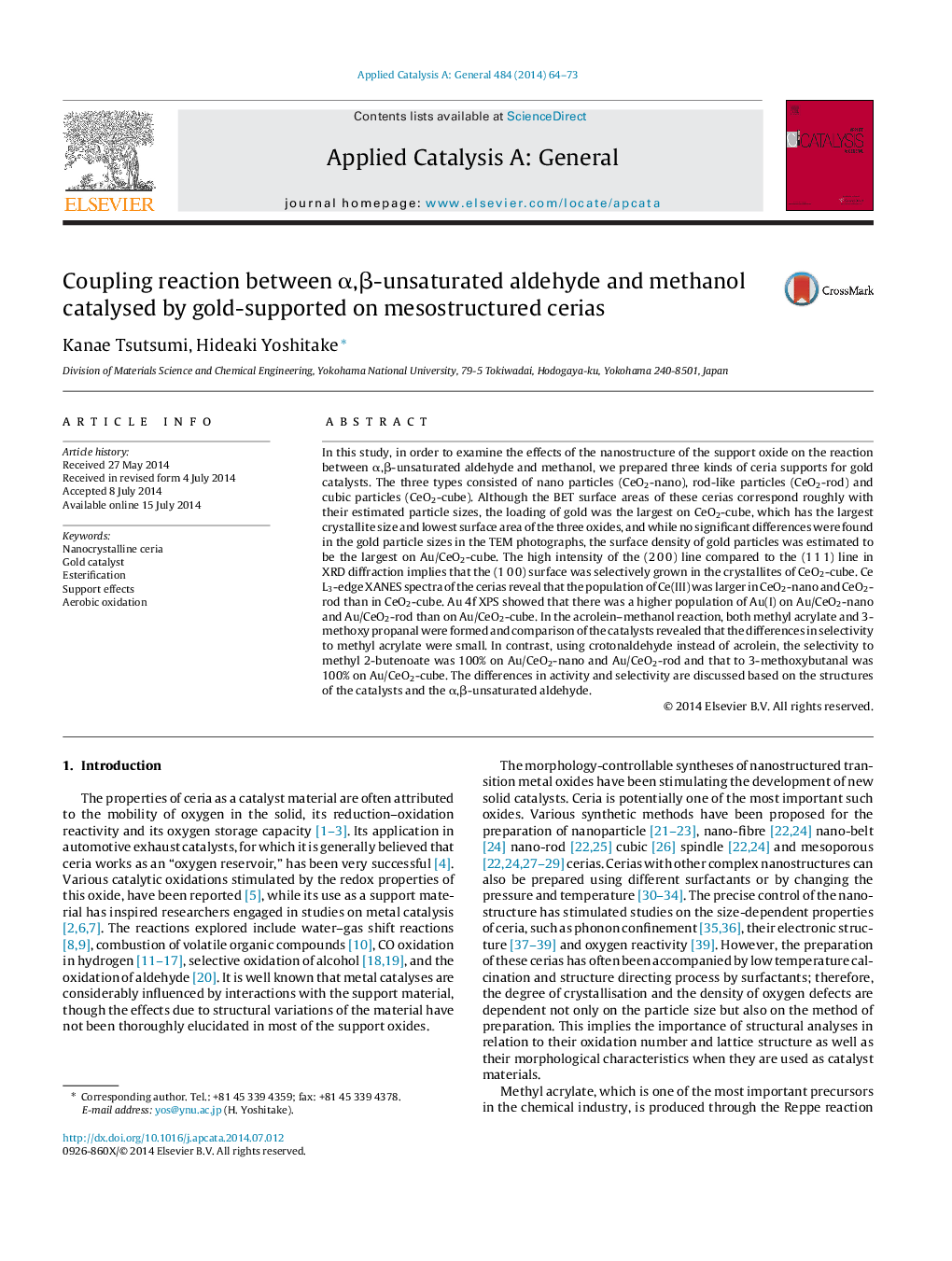| کد مقاله | کد نشریه | سال انتشار | مقاله انگلیسی | نسخه تمام متن |
|---|---|---|---|---|
| 39652 | 45830 | 2014 | 10 صفحه PDF | دانلود رایگان |

• Ceria in nano-, rod- and cubic-particles are used for the support of gold catalyst.
• No significant differences are found in the gold particle sizes in TEM photographs.
• The population of Ce(III) is larger in CeO2-nano and CeO2-rod than in CeO2-cube.
• That of Au(I) is higher on Au/CeO2-nano and Au/CeO2-rod than on Au/CeO2-cube.
• Significant differences in the selectivity are found in aldehyde–methanol reactions.
In this study, in order to examine the effects of the nanostructure of the support oxide on the reaction between α,β-unsaturated aldehyde and methanol, we prepared three kinds of ceria supports for gold catalysts. The three types consisted of nano particles (CeO2-nano), rod-like particles (CeO2-rod) and cubic particles (CeO2-cube). Although the BET surface areas of these cerias correspond roughly with their estimated particle sizes, the loading of gold was the largest on CeO2-cube, which has the largest crystallite size and lowest surface area of the three oxides, and while no significant differences were found in the gold particle sizes in the TEM photographs, the surface density of gold particles was estimated to be the largest on Au/CeO2-cube. The high intensity of the (2 0 0) line compared to the (1 1 1) line in XRD diffraction implies that the (1 0 0) surface was selectively grown in the crystallites of CeO2-cube. Ce L3-edge XANES spectra of the cerias reveal that the population of Ce(III) was larger in CeO2-nano and CeO2-rod than in CeO2-cube. Au 4f XPS showed that there was a higher population of Au(I) on Au/CeO2-nano and Au/CeO2-rod than on Au/CeO2-cube. In the acrolein–methanol reaction, both methyl acrylate and 3-methoxy propanal were formed and comparison of the catalysts revealed that the differences in selectivity to methyl acrylate were small. In contrast, using crotonaldehyde instead of acrolein, the selectivity to methyl 2-butenoate was 100% on Au/CeO2-nano and Au/CeO2-rod and that to 3-methoxybutanal was 100% on Au/CeO2-cube. The differences in activity and selectivity are discussed based on the structures of the catalysts and the α,β-unsaturated aldehyde.
Figure optionsDownload high-quality image (113 K)Download as PowerPoint slide
Journal: Applied Catalysis A: General - Volume 484, 22 August 2014, Pages 64–73